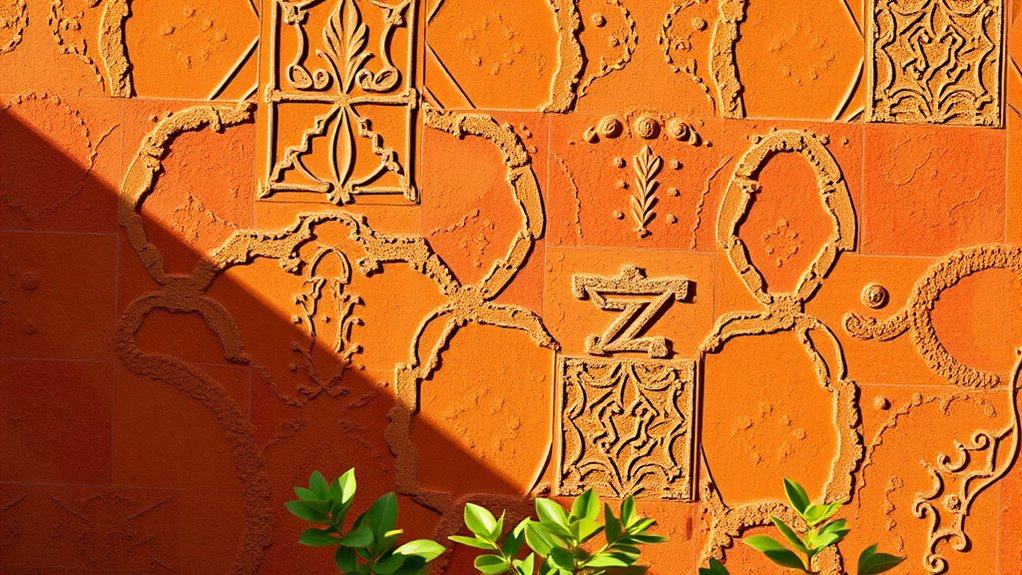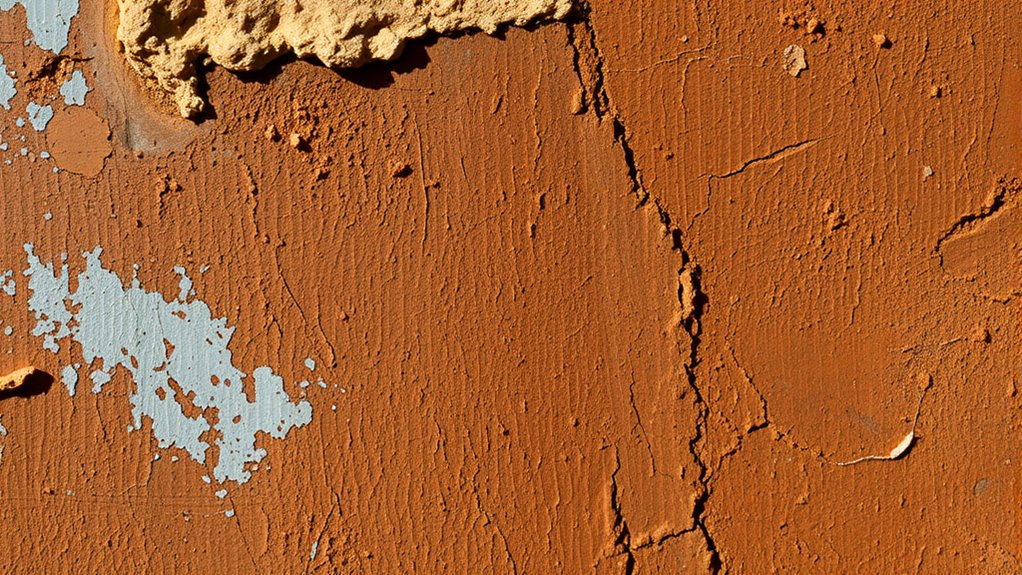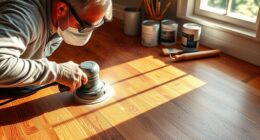Textured walls can totally transform your space into a chic haven without costing you a fortune. With affordable matt emulsion paints, you can create stunning effects using a simple 70:30 water-to-paint mix. Try techniques like sponge painting to achieve a layered look that mimics elegant plaster. Just keep in mind the extra maintenance they might require, especially in homes with pets or young kids. Stick around, and you’ll discover some helpful tips to make your textured wall project a breeze!
Key Takeaways
- Use a 70:30 water-to-paint ratio with affordable matt emulsion paints for a luxurious textured look.
- Experiment with sponge painting techniques to achieve a unique, layered effect on your walls.
- Apply paint in circular motions and vary pressure to avoid harsh lines, ensuring a seamless finish.
- Consider the maintenance needs, as textured walls may require more cleaning than flat surfaces.
- Use textured walls as artistic focal points, sparking conversation and enhancing your home design.

Textured walls are taking the design world by storm, giving your space an artistic flair reminiscent of chic European cafes and modern galleries. If you want to elevate your home’s aesthetic without breaking the bank, textured interior walls might just be the answer. This trend has gained momentum for its ability to create a stunning visual impact while often eliminating the need for additional decor. Imagine your walls serving as standalone art pieces, capturing attention and sparking conversation.
To create a textured wall in your home, you don’t need to spend a fortune on expensive materials like limewash. Instead, you can replicate that luxurious look using affordable matt emulsion paints mixed with water in a simple 70:30 ratio. This DIY approach gives you the freedom to experiment and personalize the design to suit your style. Whether you opt for sponge painting or other textured paint techniques, the results can be remarkably striking.
One popular method to achieve textured interior walls involves using a sponge to apply paint in circular motions. This technique creates a beautiful, layered effect that mimics the look of rough plaster. As you work, make sure to vary the pressure and direction to achieve an even coverage without harsh lines. The beauty of this approach is that it allows you to create a textured wall that feels unique to your home, reflecting your personal taste.
While the textured wall trend is captivating, it’s essential to consider the practical aspects, especially if you have pets or young children. Some people appreciate the visual interest and the artistry of these walls, while others voice concerns about maintenance.
Textured walls can gather dust and stains more easily than flat surfaces, so be prepared for a little extra upkeep. However, with thoughtful design and care, you can enjoy the beauty of your textured walls without too much hassle.
Frequently Asked Questions
What Is the Current Trend for Wall Texture?
The current trend for wall texture focuses on rough, troweled plaster finishes that give your space a modern, artistic vibe.
You’ll notice a lot of homeowners opting for raw or subtly painted textures, enhancing their rooms without cluttering them with decor.
Various materials like clay and lime are popular choices, moving away from outdated styles.
If you’re feeling adventurous, DIY techniques can help you achieve these trendy textures in your home.
How to Make Textured Walls Look Modern?
To make your textured walls look modern, start by opting for a matte finish in neutral or muted colors.
You can use limewash to soften the texture and add depth. Consider techniques like sponge painting or faux plaster for a fresh look.
Adding plaster accents or wall murals can create focal points, while painted textured wallpaper blends traditional and contemporary styles, making your space feel inviting and stylish.
Experiment and enjoy the transformation!
How to Untexture a Textured Wall?
To untexture a textured wall, start by gently sanding the surface with a drywall sander.
Once you’ve smoothed it out, apply a skim coat of joint compound using a drywall knife, letting it dry completely before sanding again for a flat finish.
If the texture’s stubborn, use a wallpaper removal solution to soften it before scraping.
Don’t forget to wear protective gear like a dust mask and goggles while you work!
What Is the Easiest Way to Add Texture to Walls?
Adding texture to your walls is like giving them a cozy sweater; it instantly changes the feel of the room.
One of the easiest methods is sponge painting, which allows you to create a unique, mottled effect with minimal effort. You could also use a flour and paint mixture for a matte raised texture.
Alternatively, textured wallpaper offers a flexible, easy-to-change option that can elevate your space beautifully.
Conclusion
Incorporating textured walls into your space can truly transform your home, proving that sometimes, less is more. With just a few simple techniques, you’ll create depth and interest that captivates the eye. Remember, “variety is the spice of life”—so don’t hesitate to mix materials and styles! Embrace your creativity, and watch your walls come alive with character. Now, grab your tools and start your textured wall project—you’ve got this!









